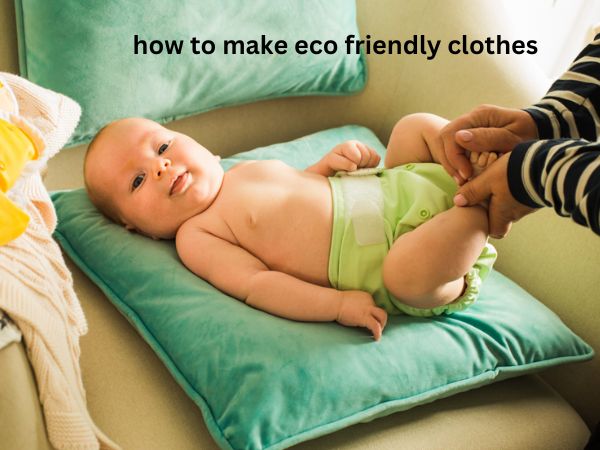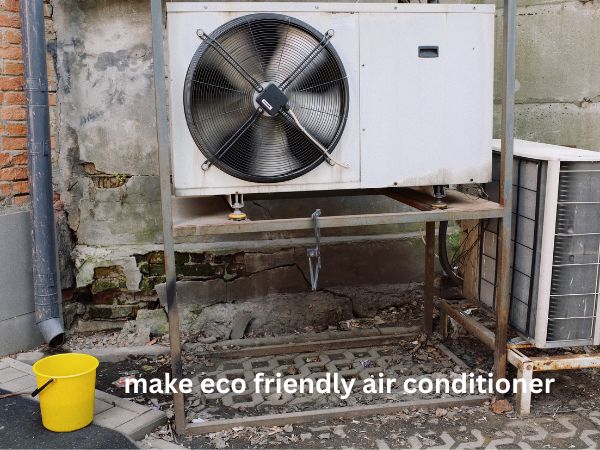how to make eco friendly clothes
A few simple tips for how to make eco friendly clothes include using natural fabrics such as cotton, hemp, and bamboo; using a dye that is VOC-free and non-toxic; washing clothes in cold water whenever possible; line drying clothes instead of using a dryer; and using recycled materials such as old t-shirts or towels to make rags.
how to make eco friendly clothes
There are a few things you can do to make eco friendly clothes.
One is to buy organic cotton. Organic cotton is grown without the use of pesticides or fertilizers, so it’s better for the environment.
Another thing you can do is buy clothes made from recycled materials. Recycled materials can include items like plastic bottles and old t-shirts.
You can also reduce the amount of laundry you do by wearing your clothes multiple times before washing them. This will help save water and energy.
companies making eco-friendly clothing:
There are also a number of companies that specialize in making eco-friendly clothing, such as Patagonia, United by Blue, and Girlfriend Collective. So if you’re looking for something specific like a made-in-the-USA organic cotton t-shirt, there’s definitely an option out there for you.
Patagonia:
Patagonia is a great brand for eco-friendly clothing. They use sustainable materials and practices throughout the entire production process, from sourcing to finished products.
For example, they use recycled polyester made from used soda bottles, which helps reduce waste and conserve resources. They also use low-impact dyes and water-repellent finishes that minimize environmental impact.
In addition, Patagonia is a member of 1% for the Planet, which means they donate 1% of their sales to environmental organizations around the world.
United by Blue:
United by Blue is eco-friendly because they make their cloth from recycled materials. For every product that they sell, they remove a pound of trash from the ocean and coastlines. They also work to support clean water initiatives around the world.
Girlfriend Collective:
Girlfriend Collective is very eco-friendly in their cloth making- they use recycled plastic bottles to create their fabric. This reduces the amount of waste going into landfills and also helps reduce our reliance on fossil fuels. Additionally, the company is transparent about its supply chain, so you can be sure that they are Fair Trade certified and working under humane conditions.
Eco-Friendly Clothing Company’s Marketing Strategy
There are a few ways to market an eco-friendly clothing company. One way would be to target people who are environmentally conscious and care about the planet. Another way would be to focus on the health benefits of wearing eco-friendly clothing.
For example, many people don’t realize that conventional cotton is one of the most toxic crops in the world. Eco-friendly clothing is made without harsh chemicals and dyes, so it’s healthier for you and the environment. You could also highlight the fact that eco-friendly clothing lasts longer than conventional clothes, which reduces waste.
Lastly, you could offer unique sustainable products that other companies don’t offer. For example, you could create a line of clothes made from recycled materials or biodegradable
Benefits of wearing eco friendly clothes
- Eco-friendly clothes are made of sustainable materials, which means they can be reused or recycled.
- They help reduce your carbon footprint since the production of eco-friendly clothing consumes less energy than traditional methods.
- The use of natural dyes and fabrics in eco-clothing helps protect our environment from harmful chemicals.
- Buying eco-friendly clothing sends a message to the fashion industry that sustainability is important to consumers.
- Eco-friendly clothing is often high quality and lasts longer than traditional clothing, so you end up saving money in the long run.
Eco-Friendly Clothing Packaging
There are a few things to consider when packaging eco-friendly clothing:
- Use biodegradable materials whenever possible.
- Make sure the packaging is lightweight and can be easily recycled.
- Include information about how to recycle the packaging.
- Avoid using any kind of plastic if possible.
Importance of Eco-Friendly Clothing:
Eco-friendly clothing is important because it helps reduce the amount of pollution that’s released into the environment.
Clothing production is a major contributor to pollution, and the synthetic materials used in most clothes are not biodegradable. So when these clothes are washed, all of the toxic chemicals they contain are released into our water systems.
Eco-friendly clothing is made from sustainable, natural materials that biodegrade easily, so there’s no harm done when they’re eventually disposed of. So by choosing eco-friendly clothing, we can all play a small part in reducing the amount of pollution that’s harming our planet.
materials of eco-friendly clothes:
Hemp, organic cotton, and bamboo are some of the most popular materials used to make eco-friendly clothes. Hemp is a sturdy and durable fabric that doesn’t require pesticides or herbicides to grow, and it’s also biodegradable. Organic cotton is grown without the use of toxins or artificial fertilizers, and bamboo is a sustainable resource that grows quickly and doesn’t require any irrigation.
5 Tips for sewing eco-friendly clothes:
- Choose natural fabrics like cotton, linen, or wool.
- Shop for vintage or secondhand clothes whenever possible.
- Repair and reuse clothes whenever you can.
- Make your own clothes from scratch whenever possible.
- Use a sewing machine that consumes less energy.
faqs for how to make eco friendly clothes
Answer:
Hemp is a sustainable crop that grows without pesticides or herbicides, making it a more environmentally friendly choice for clothing than conventional cotton. Hemp cultivation also helps to improve soil quality and reduce deforestation.
Answer:
Yes, it is eco-friendly. Conventionally grown cotton uses more insecticides than any other crop. Cotton is a thirsty crop and consumes a lot of water. Organic farming practices conserve resources while protecting the environment.
Answer:
There is no one-size-fits-all answer to this question, as the environmental impact of cotton production can vary depending on factors such as the type of cotton grown and the manufacturing process used.
Conclusion

You can make your own eco-friendly clothing right at home with a few simple steps and common household items. With a little creativity, you can design unique clothing that is better for the planet and won’t break the bank. So what are you waiting for? Get started today!

